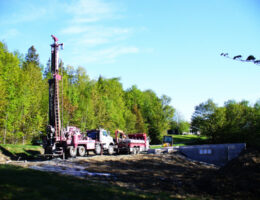Surface Wells
What is a surface well?
Contrary to an artesian well, the surface well takes its water from an area very close to ground level. An artesian well gets its water more than a 100 feet down, whereas the surface well only goes 25 to 30 feet down. As the water comes from the water table or from a surface water vein, it is more accessible, therefore this type of well is less costly.
The disadvantages of a surface well
A surface well can only work, when the soil is made up of sand, gravel or compacted earth. It will be impossible for you to use a surface well if your soil is too rocky, condensed or loamy.
As the surface well is closer to ground level, the risk of water contamination is higher, because the water table is made up of water running through the surrounding environment: rainwater, melting snow or even rivulets. Therefore your water can quickly become unfit for human consumption or provoke health problems due to bacteria present in the water.
Also, you must remember that the efficiency of your surface well depends entirely upon all of the elements mentioned above, that feed the water table. We can therefore conclude that during dry periods or droughts, the yield of your surface well will be affected.
Please contact us for more information on the different wells available.
Puits Bernier does not install surface wells
Artesian wells are by far a better solution. See our page on artesian wells for more information.





